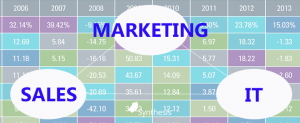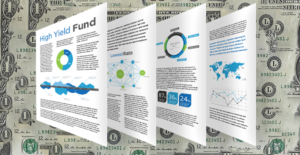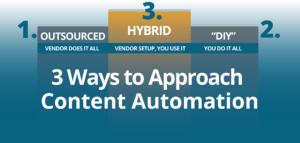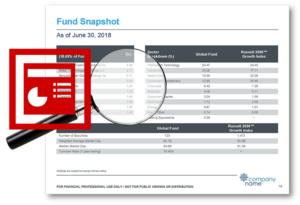Trends in Asset Management Marketing: What to Expect in 2017
 Last year, we published a blog on what to expect in asset management marketing in 2016. The post is based on an interview I conducted with Andrew Corn, CEO of E5A Integrated Marketing. During the interview, Andrew and I discussed how 2016 would be the year of transparency and immediacy; the year for asset managers to leverage data to improve segmentation and personalization, create more transparency in the sales process, and provide timely information to every audience, on every channel. At Synthesis Technology, we saw these predictions hold true. Many of our clients made significant improvements to their content delivery methods through strategic data and content automation.
Last year, we published a blog on what to expect in asset management marketing in 2016. The post is based on an interview I conducted with Andrew Corn, CEO of E5A Integrated Marketing. During the interview, Andrew and I discussed how 2016 would be the year of transparency and immediacy; the year for asset managers to leverage data to improve segmentation and personalization, create more transparency in the sales process, and provide timely information to every audience, on every channel. At Synthesis Technology, we saw these predictions hold true. Many of our clients made significant improvements to their content delivery methods through strategic data and content automation.
So, what will be the new trends in 2017? How will firms embrace data and technology to be even more competitive?
Once again, I called upon Andrew to mine his brain for insights. He is the former CIO of Beacon Trust and Clear Asset Management, where he led the development of a multi-factor model to manage long-only equities. He has also designed ETFs and managed two hedge funds. Today, he helps firms leverage digital media and technology to grow sales through marketing and advertising, while adhering to industry regulations.
Here is part 1 (of 2) of our discussion on what to expect in asset management marketing in 2017.
Last year, you said that transparency and immediacy would be the big trends in investment marketing. Did that hold true? What will firms focus on in 2017?
Yes, transparency and immediacy were the two big trends last year. They have actually persisted and become even more important. The way you accomplish these two goals is with data.
In 2017, data analysis will be the big focus, while transparency and immediacy are the prices of entry.
Having the most recent data and the ability to crunch the numbers or run a backtest or run a forward test will be a huge differentiator. For example, the ability to run a regression based on your portfolio. But, in order to do this, your data must be scrubbed, verified, compliant, and in a place where someone can use it. That’s where things are going. It’s all a question of how fast. And the more sophisticated the audience you market to, the more important this will be.
How should firms be leveraging automation in 2017?
We are seeing that people understand the benefits of automation on a larger scale, not just publishing. Especially with artificial intelligence IAI) and digital, the goal now is to get better data and then give it to customers. Asset managers both big and small need to think about how they’re going to get there.
In terms of content automation, many marketers are probably thinking that the magic of the cloud and the database will come together to birth all the fully compliant marketing materials; but those of us that have been through it know it’s not that simple. It takes a very specific process and skill set. And that’s where outsourcing can make strategic sense.
What’s the biggest challenge asset managers have with implementing automation?
The biggest challenge for firms is getting it going. You have to start by documenting the process to uncover exactly what can be automated and what can’t. Not 100% of everything can be automated. If you can document the process into a flow chart, you can see what can be accomplished and set realistic goals. The biggest hold-up for asset management firms is who owns the process — sales, marketing, performance reporting? Next is the compliance review. So the question is where does this happen? Does it involve copy? Does it have to be reviewed again when it’s a finished document? It has a lot to do with how the firm handles compliance.
Marketers want to have their materials turned around in a day and have it perfect. That’s the dream and it is achievable. If the deliverable is a fact sheet or a pitch book, there’s no reason that can’t be automated through a third party and delivered back without any internal systems needing to change. It’s really about delivery, customer interface, and customer experience so that you’re getting what you need. All you want is your work completed.
What’s your advice – automating in-house or outsourcing?
It’s odd when companies resist outsourcing when all you’re doing is getting your final product. Take this analogy: I want to hang a picture on my wall, so I go to the hardware store and they ask me, is it big and heavy? Yes. Okay, so you’re going to need a hand drill and then you’re going to need a drill bit and then you’re going to need….and it’s like, please just tell me what I need to do to get my picture up! I don’t want to learn about drill settings. I don’t want to learn about what kind of head is on that drill bit.
To be practical there needs to be a middle ground between reinventing the wheel in-house and getting the final product consistently right and on time – and I mean the new faster schedule with automation. There needs to be a change in the way people look at these content automation projects. Do you want it to be a big internal software project or is it smarter to outsource to an expert who has the resources and expertise? I think fewer people want a robust application built for them, which often results in technology that under delivers. I’ve run into this a lot: “Hey I know a guy who can make you a mobile app in a week.” And then, “Check out this mobile app; it doesn’t do anything but it’s pretty and cool.” Sometimes the robust system is necessary for the desired outcome, but there is a cost. This cost is measured based on ROI. It might be that you need to finance it over a year, but the ROI from automation will be there.
One thing that we’re seeing is that firms want to get the work done without displacing anyone. They are going to end up saving money and getting rid of some old, internal systems, but we’re seeing a lot of sensitivity to how it’s going to affect their internal staff. Do I still need them all? Do I need fewer of them? I think there’s a lot more sensitivity to that now than there was a few years ago. Post-2008, managers were doing whatever they could to save money. Now, I think they want to save money but they don’t want to lose bodies. They can apply automation and then apply those bodies to other work aiming to increase revenue.
In 2016, we saw Compliance departments driving a lot of the automation initiatives. Do you think this will continue in 2017?
RegTech is a really big thing right now. At small and large firms there needs to be efficient processes for regulatory procedures. It would be nice at the end of every quarter if you can approve everything the same day and in the same way.
At a big firm, if I have five people interviewing managers for their commentary which is going to appear in long-form, short-form and shortest on different fact sheets aimed at different audiences, all of it has to be signed off on and filed. I think 2017 will be a big year for data and content automation. If it was automated, then I could just approve it and there would be a date and time stamp along with my initials and IP address. This should be standard at asset management firms now, of any size.
I don’t know whether they have the budget, but right now we’re seeing two things in Compliance: One, it’s growing rapidly and two, there aren’t many people trained every year for it. This is driving salaries up and making people commodities. The compliance department is now the fastest-growing, so any automation will help keep compliance costs down. Not just because people don’t want to pay salaries, but because they can’t get the talent. So that probably has a lot to do with why Compliance is driving a lot of these initiatives.
What’s your take on the DOL Fiduciary Rule?
So DOL is all about fiduciary duty — the financial advisor must put my needs first ahead of their own. We need to understand the fees and what the costs are. It’s all about transparency and nimbleness. For asset managers, it’s changing their product mix, structure, and share classes. Some RIAs and even broker-dealers are structuring this as an up-front fee, but there’s definitely schools of thought in this. What we are seeing is people want to figure out how to get the no-load or one load status. And lower fees are tilting more people towards passive management.
The money is flowing out of active into passive, but I believe that will reverse itself within the next two years. Especially as interest rates rise, some passive bond funds are going to get destroyed in performance compared to active bond funds. There are a bunch of things that have been driving the market that really push us into passive. There may be things in the market that drive us back into action, depending upon asset class, and market cycles. That along with a new administration will determine how fast that happens.
But we certainly see the need to move to passive including hedge fund replication or doing overlays as a hedging strategy as opposed to deploying hedge funds. We all know the story with Liquid Alternatives but again, who’s the audience? Why are they not going after the right audience? I think marketing is missing it. They could be benefiting a lot of people, but unless AUM is flowing in, the fund companies don’t pay a lot of attention to it. I think they launched them thinking they’re going to get the same results they do with regular funds, but it’s not working out like that and they have not come up with the right strategies to make them work.
What’s your advice to marketers regarding passive vs. active investments?
There’s some great data out there on active vs passive. We work with the Discovery Database which shows the number of firms utilizing mutual funds is still growing. But the number of funds using ETFs is growing faster. The total number of firms using mutual funds is greater than the total number of firms using ETFs (shocking but true), but that is the reality.
If you’re selling ETFs, there’s no such thing as negative alpha. You’re going to get exactly the index minus the fee. The fee is small because it’s passive, so you’re basically getting the index, case closed. On the other hand, the active manager has to explain that they’re going after the same benchmark, but we’ve got an investment process aimed to beat it. Right there is where the confusion can begin.
The active manager needs to do a great job of giving the right information at the right time to the right prospect, whether they’re an advisor or whether they’re the end customer.
So managers need to ask, how do I educate my audience? How does this fit into the portfolio? What does it to do differentiate my business? Why don’t you want thousands or tens of thousands of advisors? What does suitability mean for my client for this fund? Should I roll out something in my asset allocation model and put this in? What percentage of the portfolio should it be and how does it correlate to other asset classes?
These are the thoughts that are going through both the product designers, people who are making asset allocation models and more sophisticated advisors and clients. So, now it’s just a question of how it’s addressed by the industry.
What’s the most innovative thing asset management marketers are doing right now?
The smartest marketers are building content repositories of information that can be used for multiple purposes. So a marketer can say, “I love the way this copy sounds and, actually, it answers an RFP. I love the way this is written and this design. So, I’m going to use it in a factsheet and a presentation.” It makes it possible to update performance information once and have it appear in everything and not worry about mistakes. The last thing you want to do is make updates all over the place. You want to be able to update it in one place, have it signed off on, and have it appear everywhere.
Firms are really starting to get that and expand that out into all different types of content. It could be the answer to a question, or a perspective on something in the market. It could be why this asset class is performing the way it is over the last six months, the last year, or the last two years. It’s, why focus on this asset class at all? It could be how this fits into a portfolio, be it institutional all the way down to working with an advisor. So, it’s the whole idea of having very powerful, compliant messaging along with the ability to disseminate it swiftly to multiple audiences. Asset managers who accomplish this will have a very nimble sales force. And, a nimble sales force that speaks to prospects more quickly with the right data, with the right answers, and with the right messaging will usually win.
What technologies are investment marketers using to automate the marketing and sales process?
Some have a big commitment to Oracle or Salesforce, so they want to work from those platforms. We tend to work on the copy, graphics and design. Then, we consult with them on the right way to go about it. What usually happens is that once we mention that there are services to do this, it is a “marketing project”. And as soon as you say the word software, they’re like ‘uh-oh, we better call the IT department’.
This is a big stumbling block for larger managers. Then, the IT department treats it as a development project, whether they’re partnering with a firm or doing it in-house. This happens because the firm controls the database, or the flow of information, in some place or manner. Because of all the sign-offs, rules, and protocols, a three-month project can turn it into a year. Sometimes IT can be part of the problem and not the solution. However, some IT departments are extremely helpful and serve to help translate things between marketers and outside service providers. But what we’re seeing a lot of is the whole concept of media tech – the production of materials that have to be compliant, centralized, and disseminated quickly. Marketers are getting more familiar with technology. They feel more comfortable with technology in general because they’re using it across what they do. As a result, they’re able to more efficiently and effectively work with their IT department and get to the best outcome swiftly. When it’s SaaS, there are very few reasons why marketing can’t complete much of the project and leverage IT for the highest and best use of their time.
Thanks for reading! For more insights from Andrew Corn, listen to our Podcast interview: Trends in Investment Management Marketing.
Here are some related resources that might interest you: From the Blog: Trends in Asset Management Marketing: What to Expect in 2016 |  From the Blog: How much does it cost to automate factsheets? 🧐 |  From the Blog: The 3 Ways to Approach Content Automation |




 Compare the Top 3 Finserv Content Automation Vendors [White paper]
Compare the Top 3 Finserv Content Automation Vendors [White paper] Create Pitchbooks the Drive Sales [White paper]
Create Pitchbooks the Drive Sales [White paper] Build vs. Buy: Should Your Financial Services Firm Outsource or Insource Marketing Technology? [White paper]
Build vs. Buy: Should Your Financial Services Firm Outsource or Insource Marketing Technology? [White paper]  10 Tips for Rebranding your Fund Marketing Documents [White paper]
10 Tips for Rebranding your Fund Marketing Documents [White paper]




